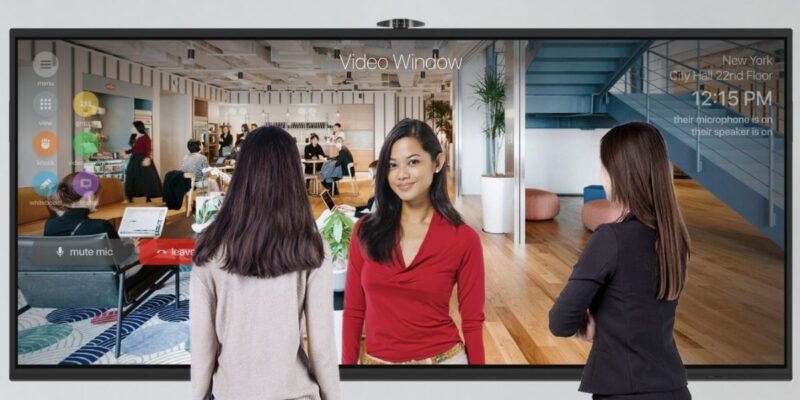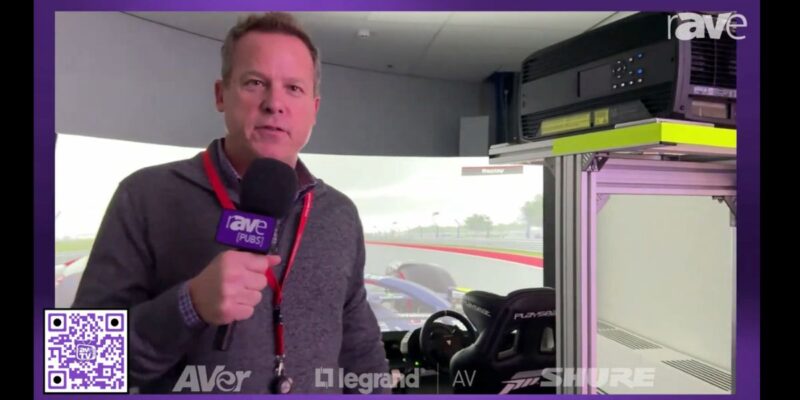Barco’s UniSee Could Take a Big Chunk of the Video Wall Market By Next Year
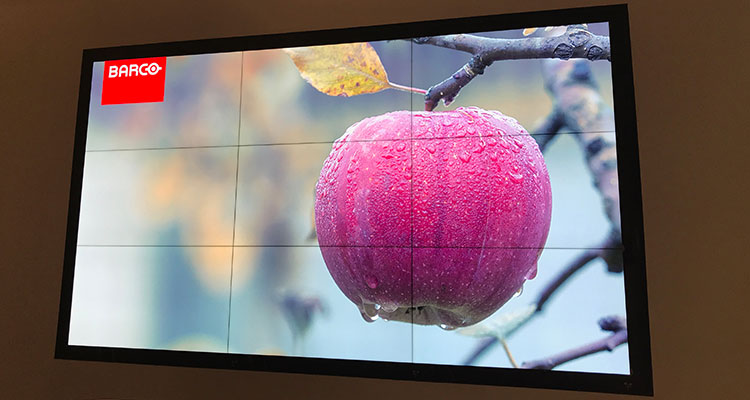 This week I went to New York City for the global unveiling of a new product from Barco, UniSee, which signals Barco’s entry into the LCD video wall market. The Barco people had described this product as “disruptive” to the video wall market. I think “game-changing” was also mentioned. This made me a bit skeptical.
This week I went to New York City for the global unveiling of a new product from Barco, UniSee, which signals Barco’s entry into the LCD video wall market. The Barco people had described this product as “disruptive” to the video wall market. I think “game-changing” was also mentioned. This made me a bit skeptical.
Like many press people, I don’t like these words. You see, I think that you should never describe your own product as either of those things — if your product is indeed disruptive or game-changing, let someone else call it that. I have also over the years had many a PR person tell me that their product had the thinnest bezel, the quietest fan, the longest life, the smallest pixel pitch and so forth, which upon investigation turned out to not be true at all.
But Barco, particularly for a “display company,” does have a history of unique product entries. Barco’s ClickShare is actually a disruptive product, arguably the most game-changing in our market for the last decade. (I hated writing that sentence so, so much.) With all that in mind, I headed to New York to see UniSee.
 At first glance, it looks almost like any other video wall, although the bezel is indeed very thin. It’s not invisible, although Barco calls it bezel-less. There is a gap of 1.09 millimeters between pixels. This can be a bit confusing — other manufacturers will list the thickness of the actual bezel on the display and some list the thickness of the gap between bezels. Barco lists the gap between actual pixels. So the space from where the color pixels of one display ends and the other begins is 1.09 millimeters on UniSee. I will say that the lines are visible, even from a distance of 20 or 30 feet, but they are very, very thin. Each 55-inch panel is 1080p HD and has a brightness of 800 nits.
At first glance, it looks almost like any other video wall, although the bezel is indeed very thin. It’s not invisible, although Barco calls it bezel-less. There is a gap of 1.09 millimeters between pixels. This can be a bit confusing — other manufacturers will list the thickness of the actual bezel on the display and some list the thickness of the gap between bezels. Barco lists the gap between actual pixels. So the space from where the color pixels of one display ends and the other begins is 1.09 millimeters on UniSee. I will say that the lines are visible, even from a distance of 20 or 30 feet, but they are very, very thin. Each 55-inch panel is 1080p HD and has a brightness of 800 nits.
But onto the good stuff. UniSee becomes way more interesting when you take it apart.
In designing a video wall, Barco wanted to rethink how a video wall should work. In the end, they built an entire system, including the mount and cabling.
 The mounting system is probably the most revolutionary part because it totally changes — and simplifies — how a video wall is put up. The mount goes up first, in a few pieces. The very first thing is these corner pieces (see photo), which include a red flexible center that is key — it gives the mount flexibility on the wall for easier alignment. It allows the video wall to kind of snap into place, using “the power of gravity” — a common refrain in Barco’s marketing materials for UniSee. After the corner pieces go up, then the main part of the mount, which also includes the display guts (power supply and cabling), then finally, the panel. The system is modular.
The mounting system is probably the most revolutionary part because it totally changes — and simplifies — how a video wall is put up. The mount goes up first, in a few pieces. The very first thing is these corner pieces (see photo), which include a red flexible center that is key — it gives the mount flexibility on the wall for easier alignment. It allows the video wall to kind of snap into place, using “the power of gravity” — a common refrain in Barco’s marketing materials for UniSee. After the corner pieces go up, then the main part of the mount, which also includes the display guts (power supply and cabling), then finally, the panel. The system is modular.
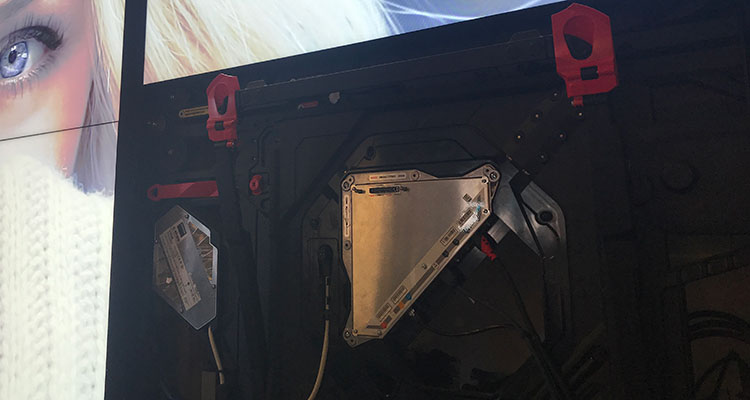 The panel is really just a panel. The rest of the display is actually in the mount, including the power supply. The power supply is magnetic so when you put the panel on the mount, the power supply magnetically snaps into place. There’s a space for a redundant power supply as well.
The panel is really just a panel. The rest of the display is actually in the mount, including the power supply. The power supply is magnetic so when you put the panel on the mount, the power supply magnetically snaps into place. There’s a space for a redundant power supply as well.
UniSee comes with a simple wrench that fits into the mount and cranks the screens into place. I did this myself while at the event for a wall that was three displays high and was able to do it pretty easily. (Barco has tested this manual wrench system for video walls up to ten displays high.) There’s also a place on the mount you can push the wrench in and it brings the display column down and to the right, giving you an access gap of two inches or so for servicing. It’s hard to describe without seeing, so I recommend you watch one of the videos I shot while there. I interviewed UniSee designer Tom Dewaele, and shot a video of Tom and Corwin Hamm, Barco’s business development manager for Barco control rooms and virtual reality solutions, demonstrating in detail how UniSee works. I’d also really encourage you to see it in person when you can. Barco says that from its testing, it anticipates dealers being able to save at least 20 percent on labor and install time versus other video wall systems.
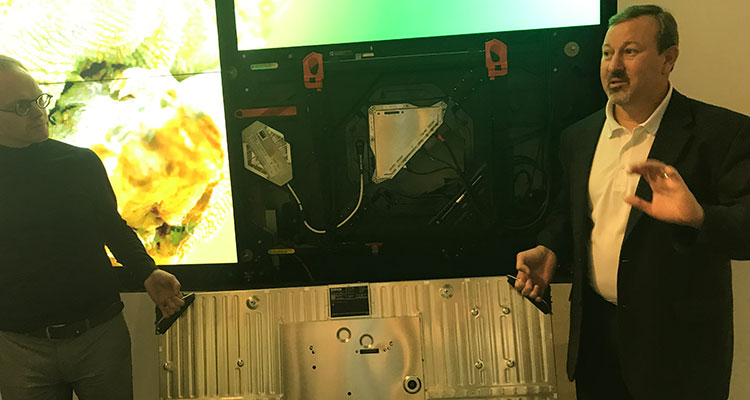 UniSee also uses Barco’s SenseX technology for real-time calibration of color and brightness, so the video wall panels will match, even if you have to replace one. Speaking of replacement, UniSee panels also come with a standard five-year warranty (instead of the more common three-year warranty) after the integrator registers the panels online.
UniSee also uses Barco’s SenseX technology for real-time calibration of color and brightness, so the video wall panels will match, even if you have to replace one. Speaking of replacement, UniSee panels also come with a standard five-year warranty (instead of the more common three-year warranty) after the integrator registers the panels online.
For now, UniSee is really just one SKU – the panel plus mounting system are only available in the 55-inch, 800 nit, wall-mount version. Barco is working on a free-standing floor model that can be used in lieu of mounting on a wall, and to accommodate curved video walls.
UniSee will initially be available through Almo Pro A/V and Starin only. It will be available by the end of the year, according to Barco.
So is UniSee really that big of a deal? I think so — mainly because I actually felt like I could potentially put this video wall up myself. I am very interested to see what you, the integrators, think. Will this replace your other video wall products? Do you think it will be a big time-saver? Is it well-priced? We’d love to know your thoughts.
You can learn more about UniSee here.




